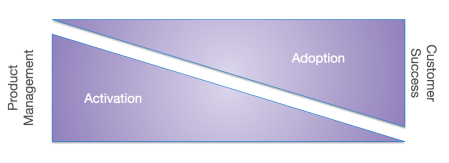Four reasons why marketing is as important as code for tech companies.
We’re living in the golden age of marketing right now. The mechanics of marketing and its impact on the business have changed dramatically in the past three years. Put another way, when I hire marketing talent, anything anyone has done more than 3-5 years ago I literally don’t care about or evaluate.
In the past few years I’ve seen marketing shift its focus from providing air cover to sales teams to now being the group within the company that’s determining the messaging and tactics that salespeople can best put into action. The data tells everyone what’s effective, impactful. Fewer opinions, more facts.

There are four reasons for this:
First. Marketing is a quant business. Everything is instrumented – you know who is responding to which offers, who is engaging with what content, what paths they take. Over time you can correlate engagement to value, and use data to find where and how prospects find you, and what signals the right time to present them with an offer or a call to action. This is a quant-jock’s delight. And data analysts are the new “must-have” role on a marketing team.
In today’s marketing you also have the advantage of short feedback loops which lend themselves naturally to an Agile approach to campaign management. Deploy a campaign, use data to validate assumptions, refine the campaign, repeat. My last marketing team collaborated with our DevOps agile coach to embrace the sprint/retrospective approach, and the team held daily stand-ups to ensure they were cohesive and focused on the most valuable activities.
Second. Google, whether we like it or not, is enforcing quality. What this means is that Google’s ability to interpret page intent is staggering. You genuinely need to be developing content paths that answer the questions your audience has, and legitimately guide them to a solution. If your bounce rate, or worse, your conversion rate is too high or too low, you’ll get penalized. It’s fundamentally obsoleted the marketing tactics that came before this.
It’s as structural a change as containers have been to DevOps. It’s creating a situation where I don’t care what you did three years ago – the search marketing tactics that worked back then no longer work today. Yes, we’re all still focused on the customer journey, but Google’s ability to assess whether that’s a productive journey you’ve created is what changed. This is a good thing. The companies with clear and differentiated positioning and value propositions, who create high quality content paths will win.
If you’re in marketing and you haven’t embraced this new world of content and data-driven optimization, you can still find a job, it just won’t be an interesting one. Just like in software, if you aren’t a full stack developer, if you aren’t learning new languages every year, you can still find a job, somewhere. It just won’t be an interesting one.
Third. Developing an effective marketing presence requires a system architecture. The category definition, positioning, awareness development, the demand generation – requires an architecture. Your category definition and positioning are that architecture, and inform how you will take your solution to your prospects and customers. Like with building software, you need this architecture to build the services that create the go-to-market “product” – the combination of campaigns and tactics you’ll put into motion.
One of my favorite marketing books is not about marketing at all, or rather, on the surface it’s not about marketing.
The book is Building Microservices and while its purpose is to help the reader understand this new-ish phase of modern software development, it also describes how organizations can function efficiently. How “loosely coupled, trusted” relationships between organizations can produce resilient, agile performance.
Agility is important. There’s an abundance of data that modern marketing teams have access to today, and scrutinizing this data, and adapting campaigns and tactics are a critical success factor. Add to that just how much the mechanics of marketing have changed in the past three years (due to a large part on the above second point), and you have a landscape that looks a lot like…software development. Containers didn’t exist five years ago at scale. Serverless computing? Same thing.
Finally, the impact of marketing takes time to create. Just like any significant software development. Assuming you have your category defined and your positioning solid, it will take 6-12 months to get scale from your demand gen. That means you’ll be iterating and iterating, refining, optimizing conversion rates, a lot.
It’s never been a better time to be in marketing. It’s never been a better time to be a CMO. You and your CTO will have a lot in common. And it’s likely your CTO will get jealous at some point, with more and more technology, and data, flowing into marketing, CMO budgets might just become bigger than CTO budgets.






